The U-Boat War
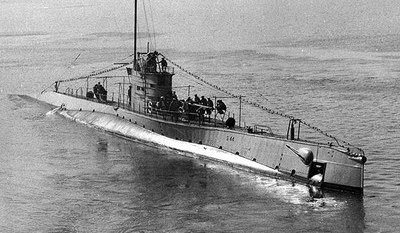
In early November 1914 the British Navy established a naval blockade of Germany to starve it of vital resources and food. In response, in February, 1915, Germany declared that "all waters around Great Britain and Ireland, including the whole of the English Channel, are hereby declared to be a War Zone. From February 18 onwards every enemy merchant vessel encountered in this zone will be destroyed". Attacking without warning, 20 German U-Boats sank over 60 ships per month in 1915, an average of 2 ships daily. The most infamous attack occurred on May 7, 1915, when the liner RMS Lusitania was torpedoed by U-20, off the coast of Ireland and sank in just 18 minutes. Of the 1,959 people aboard, 1,198 were killed, 128 of them US citizens.
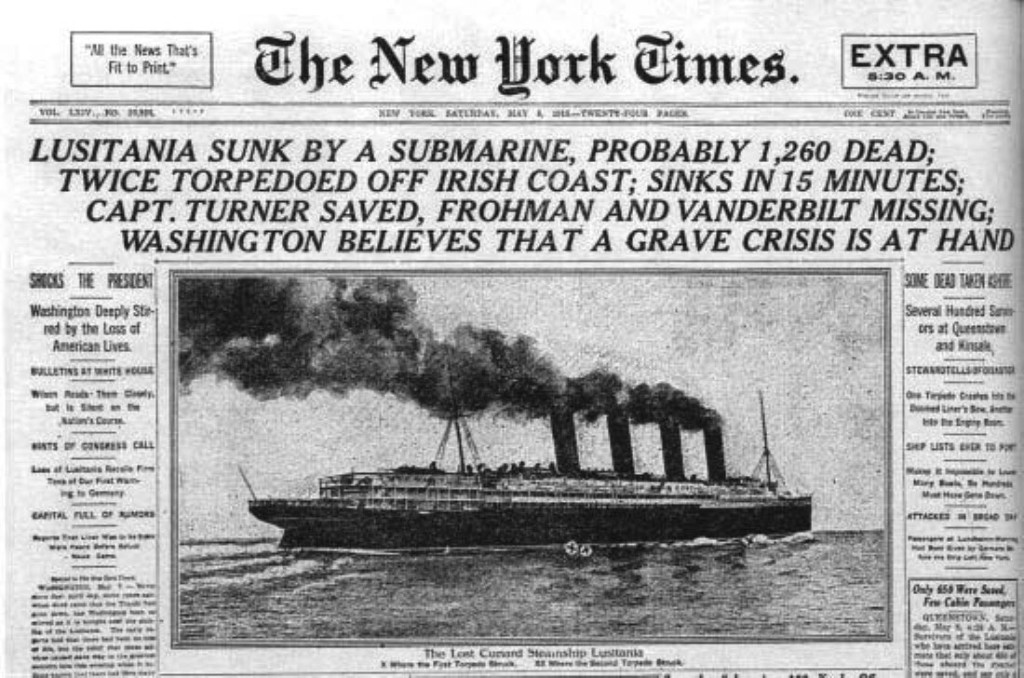
During 1916 Allied shipping suffered huge losses. U-Boats attacked 1516 ships while losing only two U-Boats.
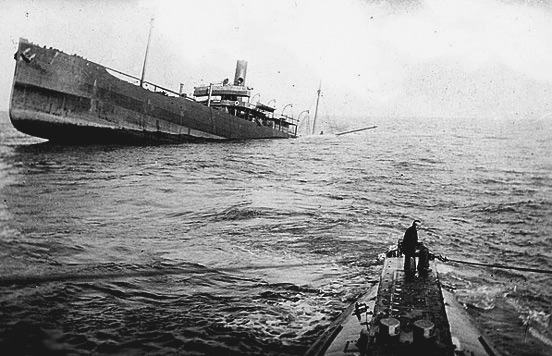
The British navy tried and failed to find ways to reduce the U-Boat menace. Massive underwater nets, undersea mine fields, and "Q-Ships" - decoy merchant ships armed with hidden cannon - failed to stop the attacks. Almost all U-boat attacks were made on the surface against lone ships that were unarmed and unescorted. In 1916 the British navy designed the first effective depth charge but anti-submarine vessels only carried two of them. Only three U-Boats were sunk by depth charge in 1916.
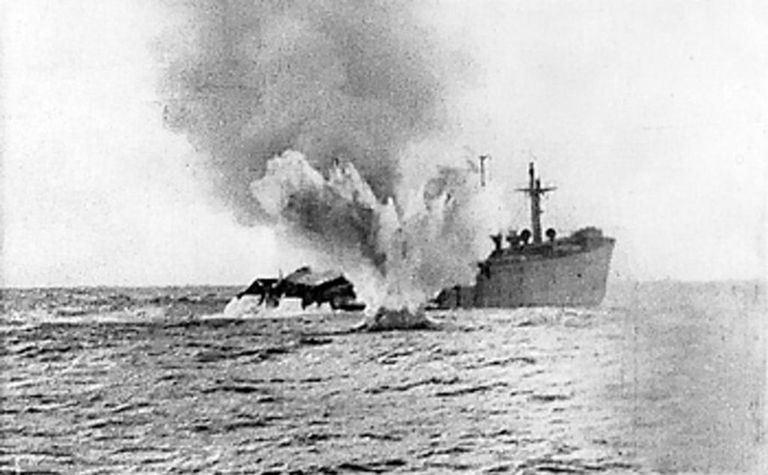
In December 1916, German planners calculated that sinking at least 300 supply ships per month would fatally cripple the British merchant fleet and literally starve the British people into suing for peace. On February 1, 1917 Germany commenced unrestricted submarine warfare in all waters surrounding Britain, on the French coast and in the Mediterranean and Baltic Seas.
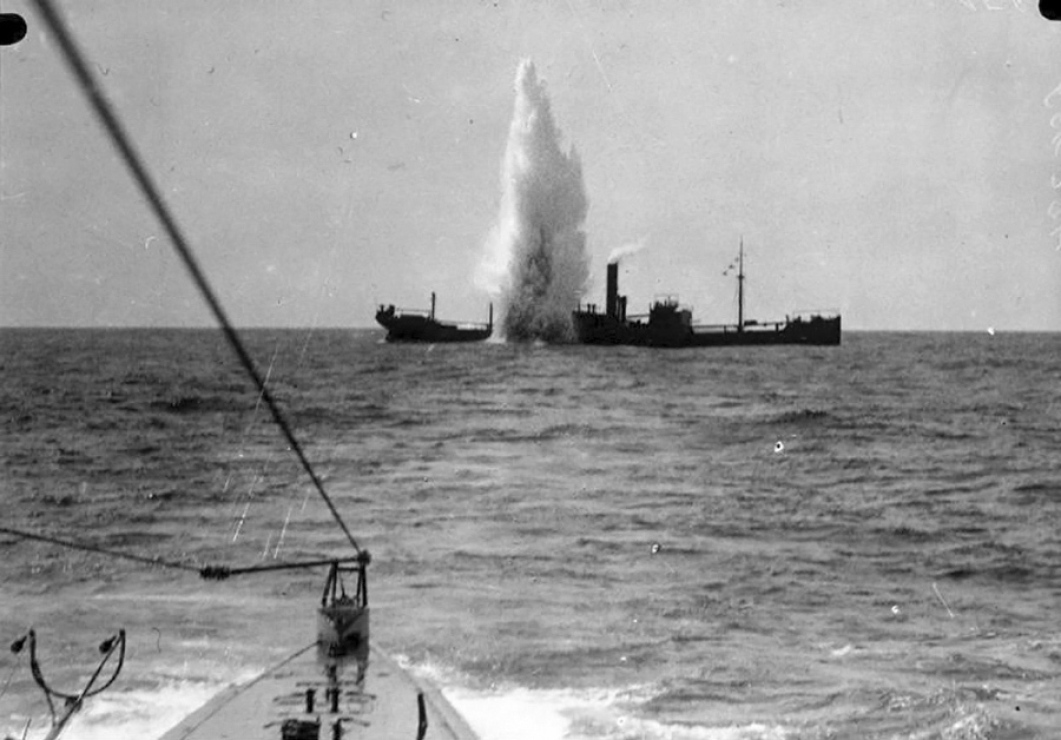
Germany had 105 submarines ready for action, with more under construction. In its first months the campaign was a great success. 105 U-Boats sank 328 ships in February, 413 in March and 516 in May. By then Britain had only six weeks' worth of wheat and was losing 25% of all supply ships crossing the Atlantic. May and June were not much better for the Allies, losing 846 ships in the two months. In three months Germany lost only nine U-Boats.
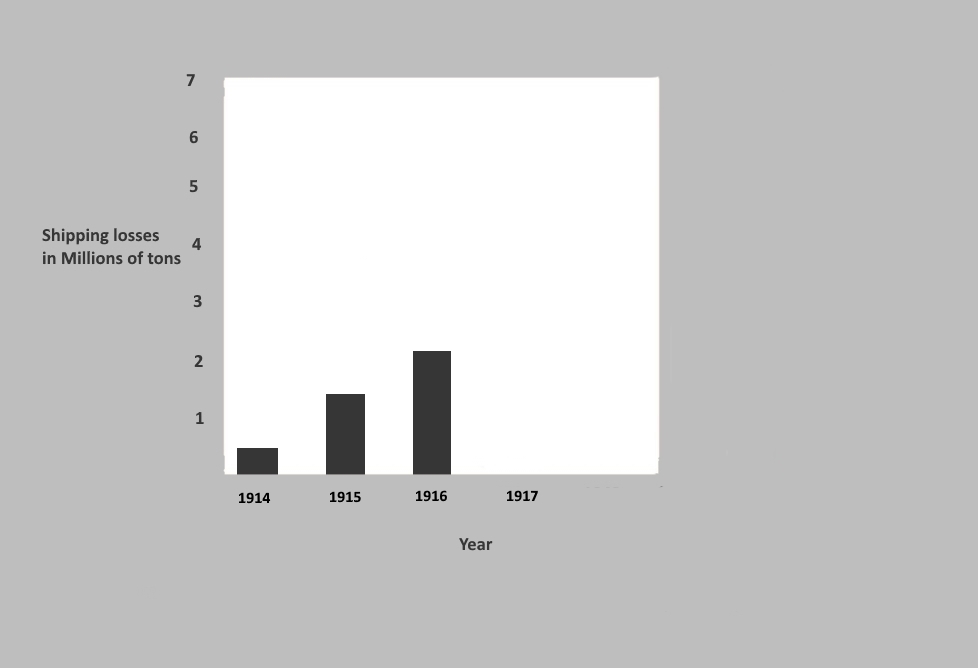
Germany's new unrestricted warfare policy meant that American and other neutral ships were now targets, too. The Germans gambled that they would win the war before the Americans army ready was ready to help the Allies. On April 6th, after ten US merchantmen were sunk by u-boats, the US Congress declared war on Germany and its allies
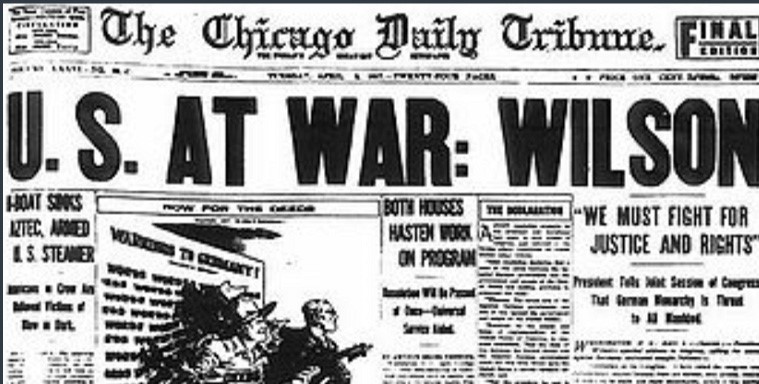
Huge losses shipping losses in the first half of 1917 forced the British Navy to accept that transatlantic convoys were necessary. Convoying was an immediate success. In 1917 the Allies had lost 3723 merchant ships to U-Boat attacks. However, once the convoy system was introduced, monthly losses dropped steadily, from 245 in September, to 213 in December, to 166 in February, 1918. At the same time U-boat losses increased as the submarines came into conflict with the convoy escorts. From September, 1914 to February, 1917 the Germans had lost only 48 boats, from February to December, 1917 they lost an additional 61
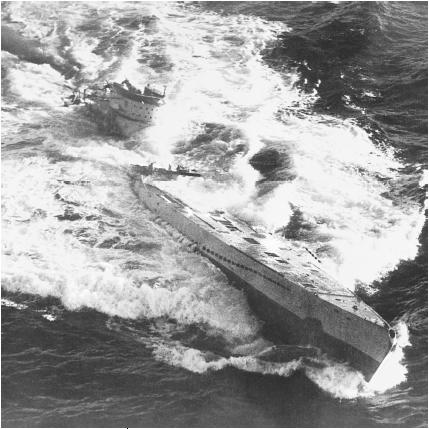
In 1918 the convoy system, greater use of depth charges and air patrols forced the U-Boats to be more cautious. U-boats were forced increasingly to operate at night or beyond aircraft range. In 1918 U-Boats attacked 1647 ships while losing 69 submarines.
Here is a short video about a WW1 U-Boat. Click on the link to view the video. At the end, click on the left or back arrow at the upper left corner of the screen.
Actual film of a WW1 German U-Boat 2:33 min.